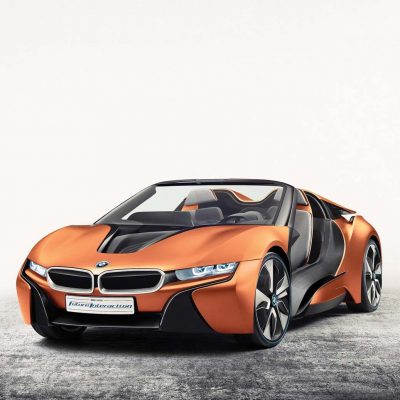BMW’s i Vision Future Interaction is a look toward an auto-navigating yet still sporty horizon
In the process of celebrating its 100th anniversary, BMW has had a busy year at the drawing table, producing concept after concept in order to broadly outline what the Bavaria-based maker describes as “what we’ll be driving in the next century.”
Among the most fascinating of the efforts is this i Vision Future Interaction, a riff on the i8 Spyder (which is, incidentally, scheduled to debut in the late fall). Chief among the concept’s technological developments are refinements of both auto-driving features as well as a sweeping windshield display and a variety of road- and traffic-sensing systems. Vehicles with highly-automated driving are an important milestone on the road to BMW’s termed “Vision Zero,” or accident-free mobility. To that end, i Vision includes support for three high-resolution vehicle displays where the content responds to the situation, all functions controlled via touch-sensitive surfaces as well as a user’s gestures and voice commands.
There is a manual driving mode with a clearly defined traditional focus, but when the car is in automated mode, there is an opportunity to relax and make proactive use of expanded content available on the central information display. Drivers can look at data on their smart phone, too—such as the charge status of vehicle batteries or available routes—before commencing a journey, or use the heads-up displays to read the same. The latter also alert the driver to road conditions and even to pedestrians/ bicyclists, etc. by providing a ghosted image of them in the periphery of the windshield.
The i Vision stands a good chance of being released more or less intact within the next two years, and BMW will in time reveal engine options. For the moment, it has offered a thrilling glimpse into what a hybrid manual/ auto-drive experience can be like.


